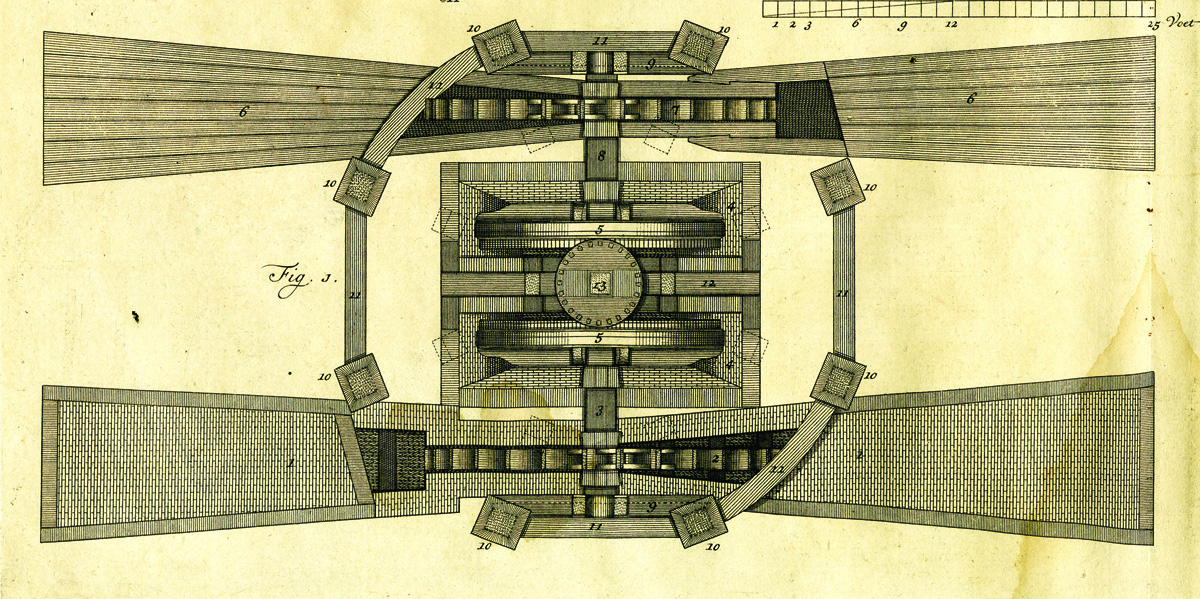What we learn from Big Love

Wind power has deep roots in coastal South Carolina. Dutch engineers began using windmills to drain Lowcountry land for agriculture three centuries ago, and the technology spread into mills for lumber, paper, and rice. The image above, from Jan van Zyl’s Great Universal Mill Book of 1734, shows the inner workings of a wind-powered paper mill. The two wide bow-tie shapes are troughs, and the wind-powered water wheels (top and bottom in the image) move paper pulp from trough to trough. Windmills like this were the pinnacle of technology in the early eighteenth century, embodying the best of engineering, mathematics, and practical craftsmanship. Today, the power of high-tech wind machines has returned to coastal South Carolina, in a facility for shaping the future of renewable energy. Courtesy of the Charleston County Public Library.
A play, for those of us who have never attempted to stage one, may not sound like serious work. It is. As the poet Goethe put it, “Thinking is easy, acting is difficult, and to put one’s thoughts into action is the most difficult thing in the world.”
When we ask our students to take on a drama as risky and robust as Charles L. Mee’s Big Love, we throw them into the deep end. We ask them to grasp, in one semester, explorations into the nature of justice, loyalty, and love that date back to Aeschylus, around 470 BC. We ask them to master the technical intricacies, not only of modern lighting, sound, and set construction but of acting, directing, and design. The effort of creating a character, and moving that character through space in a series of meaningful actions, and weaving those actions into a spellbinding whole, demands more than the creative impulse alone. Difficult skills must be studied and mastered, with all of the demanding complexities of a language or science or math.
As our writer and editor followed the student production of Big Love, sitting in to observe early meetings, midstream rehearsals, and the trial by fire of opening night, they noticed the same kinds of struggles and heard the same kinds of probing debates they’d heard among scientists or engineers. These drama students and their mentors were problem solvers, people pushing themselves and one another, often late into the night, toward answers, solutions, innovations—toward excellence. It’s a vivid reminder that a rigorous quest for discovery, whether in science or the arts, requires, at a minimum, character.
Perhaps that’s why businesses and institutions have begun using drama to help them excel. Corporations hire theater troupes to coach their executives in voice, movement, and improvisation, to break down the inhibitions that limit leadership and professional growth. Even in science education, teachers are using drama to open students’ minds to the possibilities of scientific research, engineering, and math.
At Clemson, we recognize in our student productions the essential motive of a land-grant university: to give our discoveries life beyond the academic realm. When students take the stage and perform for an audience, they deliver a product of real public value, and they teach us something about that “most difficult thing in the world”: putting thoughts into action. At Clemson, that is what we’re here to do.
R. Larry Dooley
Interim Vice President for Research


